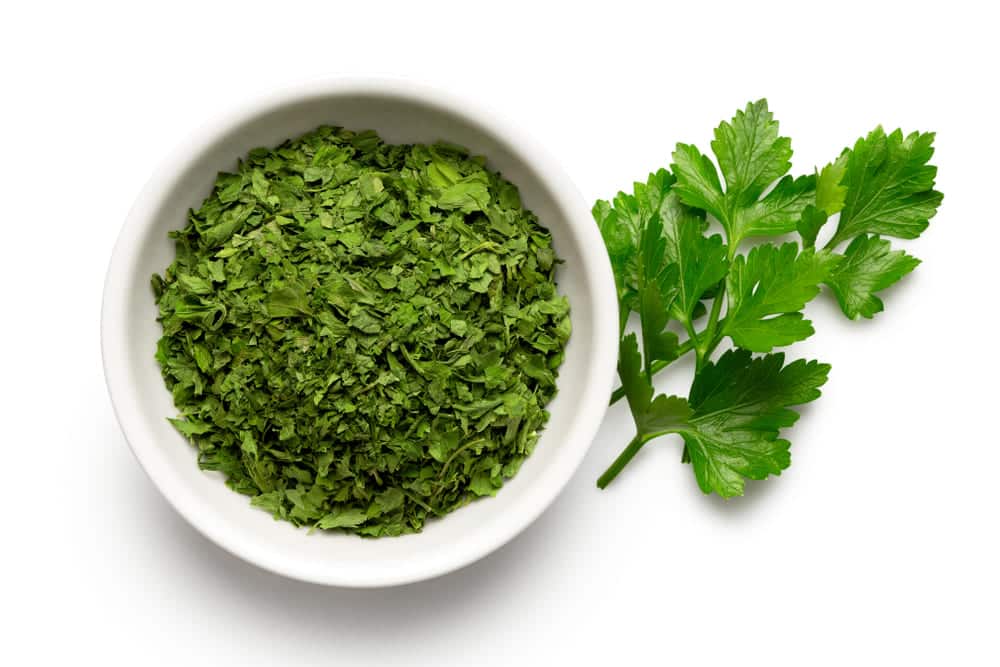
Some ingredients, even with the same appearance can sometimes differ a lot. There are lots of herbs that appear quite similar to each other, yet taste differently. When it comes to chervil and parsley, people are usually confused if both of these herbs can be used alternatively or have any differences. Chervil and parsley, despite looking alike, have several considerable differences.
Chervil isn’t as aromatic and strong as parsley so their cooking preferences are comparatively different. Moreover, chervil isn’t as versatile as parsley. Since both are nutritional and essential herbs, we can’t really say which herb is better. Both have their own cooking preferences and cooking characteristics. In this post, we will walk you through all the possible differences between chervil and parsley. Read on.
Chervil Vs Parsley. What Is The Difference?
Chervil and parsley are two essential herbs mainly used in lots of savory dishes. These two herbs have slightly changed flavors but they appear the same. Many people even mistake them for being the same herb. The morphology of their leaflets set them apart to some extent.
Down there, we have discussed characteristics of chervil and parsley separately so you understand the differences between them much clearer.
Parsley – Popular Green Herb
Parsley is a popular, strong green herb that is abundantly grown in the Middle East, America, and Europe. It has popularity all around the globe. Parsley is basically used to twist and turn the rich flavors of comfort meals like salads, soups, and fish dishes.
Besides all the culinary uses of parsley, it has extremely nutritious benefits in our diet along with several other commendable health benefits.
Curly and flat both leafed parsleys are versatile in nature with various cooking uses.
Here are some distinctive characters of parsley:
- From soups to vegetables, parsley is pretty much used in all the savory dishes.
- Parsley is used in many dishes as a sprinkler.
- Humus, mixed ground meat, meatloaves, and mashed potatoes have parsley as a major green herb for extra taste and flavors.
- Parsley is abundantly found in almost all parts of the world both in moisturized and dried form.
- Parsley lasts only up to two weeks when stored in a refrigerator. It will lose its freshness if surpasses two weeks.
- You may also freeze parsley in a refrigerator for long in ice cubes.
- Middle East savory recipes feel incomplete without a proper pinch of parsley.
- Either chopped or crushed to make chutneys or sauces or just sprinkled dried and fresh on meals, parsley tastes great.
- Their taste and flavors stay for long i.e. flavors are long-lived.
- Parsley is strongly aromatic.
Chervil – Delicate Spring Herb
Chervil is also known as French parsley and garden chervil. As compared to parsley, chervil has mild and subtle flavors that aren’t too intense as parsley.
People subtly use this garden chervil to season light flavored savory dishes that don’t require heavy and bold flavors. This delicate spring herb, chervil has lots of similarities but some of its uses, textures, and flavors set them different from parsley.
Here are some distinctive characteristics of the delicate spring herb, chervil:
- Chervil’s taste and flavor can be best described as a toned-down taste of parsley and mint.
- This light herb has a licorice or anise-like flavors but it is too tiny to notice many times when you have garnished your meal with chervil.
- Chervil appears pale and fine as compared to parsley. The leaves of this delicate spring herb seem finer shaped as compared to parsley.
- When the chervil grows a few extra blossoms, it means that they will taste licorice and anise-like.
- You can grow chervil in your garden much efficiently. They don’t ask much of your efforts.
- The mild and subtle licorice taste of chervil makes it ideal for garnishing purposes as the cooking process will suppress its taste to nothing. On the other hand, parsley is used in the cooking process as well.
Final Thoughts
Chervil and parsley are two delicate herbs. Despite looking like each other, parsley and chervil have lots of differences. We hope the details mentioned above will help you differentiate between chervil and parsley.